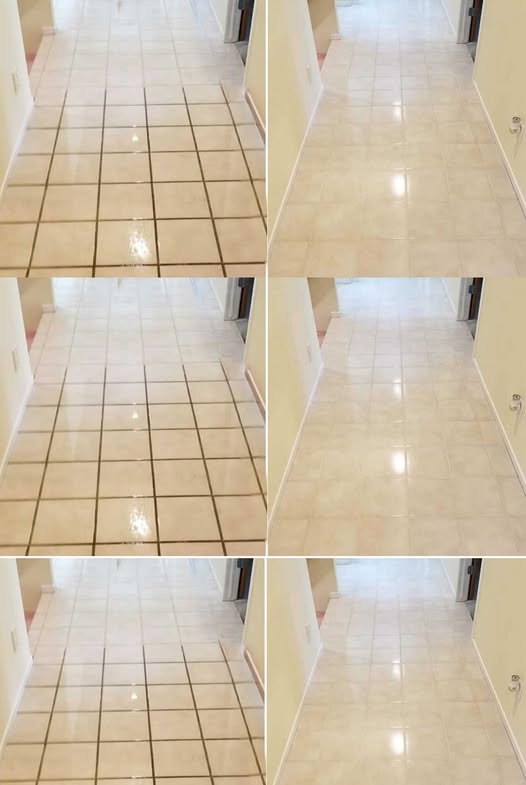ADVERTISEMENT
ent mineral buildup over time. If your mop uses a cleaning solution, add the appropriate amount according to the manufacturer’s instructions.
Step 3: Attach the Grout Brush
If your steam mop has a detachable grout brush, attach it securely to the mop. This brush is designed to scrub the grout lines as you move the mop across the floor.
Step 4: Start Cleaning the Floors
Turn on your steam mop and wait for it to heat up. Once ready, start mopping the floor, focusing on one small section at a time. Move the steam mop back and forth, allowing the hot steam to break down dirt and grime. The steam will do most of the work, and the microfiber pad will pick up the loosened dirt.
Step 5: Target the Joints
As you move the mop over the floor, use the grout brush attachment to scrub the joints or grout lines. Gently scrub back and forth, applying more pressure to the joints where dirt tends to accumulate. The steam will loosen the dirt, while the brush attachment will effectively scrub away stubborn buildup.
Step 6: Wipe and Dry the Surface
Once you’ve cleaned the area, take a clean towel or cloth to wipe away any excess moisture from the floor. Although steam mops leave floors mostly dry, wiping down the surface helps prevent any watermarks and ensures the area is completely dry. Pay special attention to the grout lines and joints, as excess water can sometimes linger in these areas.
Step 7: Repeat if Necessary
If you find that certain areas are still stubborn, simply repeat the process. The steam mop and grout brush combination will quickly break down any remaining dirt or grime, leaving your floors and joints spotless.
Additional Tips for the Best Results
- Use Distilled Water: Always use distilled water in your steam mop to avoid mineral buildup that can damage the mop or leave residue on your floors.
- Don’t Over-Wet the Floor: While steam mops use minimal water, it’s still important not to leave the floor too wet. Always dry the area afterward if needed.
- Maintain the Mop and Brushes: Clean the mop pads and grout brush regularly to maintain the efficiency of the steam mop and ensure a thorough clean every time.
- Avoid Harsh Chemicals: Steam mops don’t usually require cleaning solutions, but if you’re using one, opt for a gentle, non-toxic formula to avoid damaging your floor or the steam mop.
- For Complete Cooking STEPS Please Head On Over To Next Page Or Open button (>) and don’t forget to SHARE with your Facebook friends
- Test on a Small Area First: If you have a delicate floor type (like hardwood or polished stone), test the steam mop on a small, inconspicuous area first to ensure compatibility.
Benefits of Using This Method
- Time-Saving: By cleaning both the floors and joints in a single pass, you’ll finish the task much faster than traditional cleaning methods.
- No Harsh Chemicals: Steam cleaning uses the power of heat and water, so you won’t need to worry about using harsh chemicals or cleaning solutions.
- Enhanced Hygiene: The steam kills bacteria and germs, leaving your floors not only looking clean but also sanitized.
- Cost-Effective: Steam mops are a one-time investment that can be used for both regular floor cleaning and grout maintenance, reducing the need for multiple products.
Final Thoughts
Cleaning your floors and joints doesn’t have to be a long and laborious process. With the right tools—such as a steam mop with a grout brush attachment—you can achieve extremely clean floors and clear joints in a single pass. The combination of steam and the brush attachment works wonders for loosening dirt, scrubbing grime, and leaving your floors spotless and fresh.
So, if you’re looking for an efficient, eco-friendly, and time-saving solution for cleaning your floors and joints, give this method a try! You’ll love the results, and your home will thank you for it. Happy cleaning!
